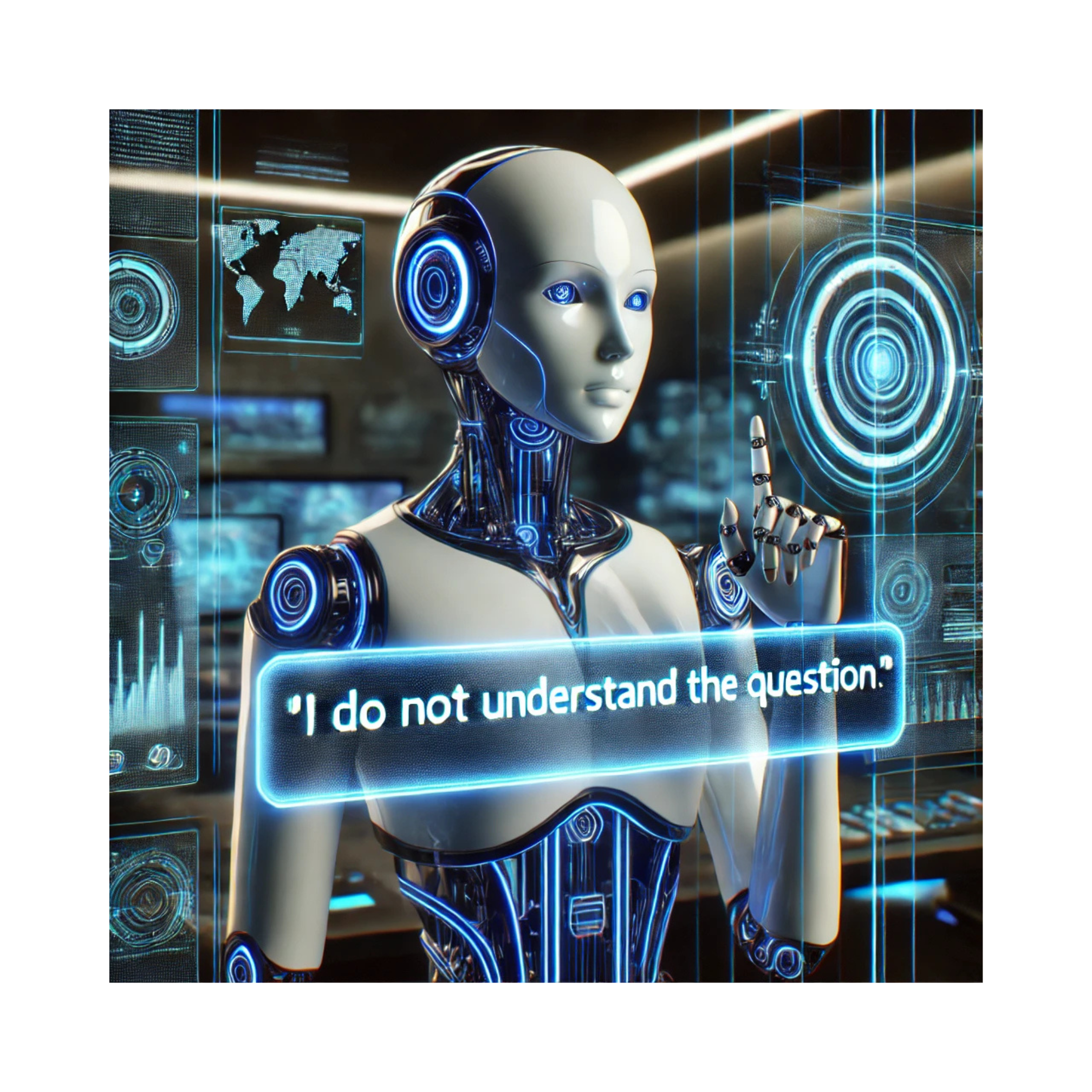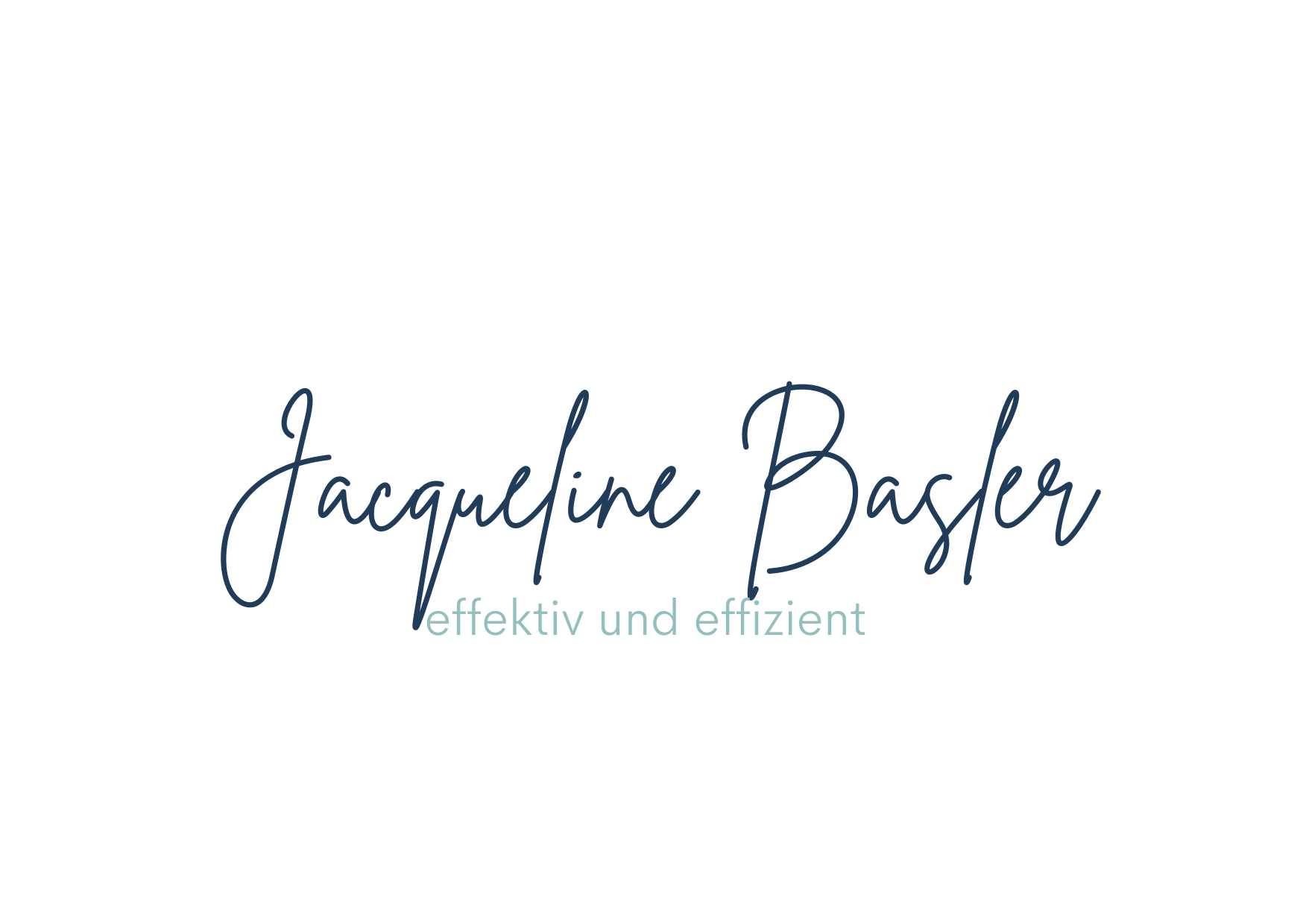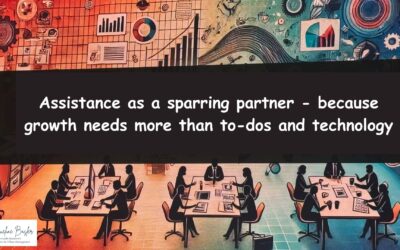“I run my business without ChatGPT at all!” – “My entire business runs on AI!”
These are statements you frequently come across on social media these days. Some deliberately reject AI, while others try to automate as much as possible. But isn’t it exactly the balance between human and machine that leads to success?
Let’s be honest: can we really stop the development anymore?
It’s reminiscent of the time when the personal computer was invented. At first, many clung to the typewriter – but today? Who even remembers how to use one, let alone still does? Technological progress is unstoppable, but the real question is: how can we use it wisely?
AI is changing our daily work – from automated emails to self-learning chatbots that answer customer inquiries. But is that enough to run a business efficiently? Many entrepreneurs already use AI-based tools without fully understanding their possibilities (and limitations).
Especially in the business world, it becomes clear: AI can automate a lot, but not replace everything. While algorithms optimize processes, strategic thinking, empathy, and flexibility remain irreplaceable human strengths.
The transformation that AI brings is not only noticeable for entrepreneurs and the self-employed – it also affects freelancers and assistants. The field of work is shifting: away from pure routine tasks, toward strategic and consultative roles. But that doesn’t mean the end – it means a new role with more responsibility and creative input.
So instead of asking whether AI is good or bad, we should focus on using it smartly. Where can AI really help, and where is the human touch still irreplaceable? That’s exactly what we’ll explore in this article.

What Can AI Really Do?
Artificial intelligence has made huge strides in recent years and now takes over many tasks that used to require human effort. AI truly shines in areas involving large amounts of data or repetitive routine tasks. But what does that look like in everyday business?
AI in Email and Text Processing
One of AI’s biggest strengths is automating communication. Email programs like Gmail or Outlook already use AI to sort messages, filter spam, or suggest automated replies. Tools like ChatGPT or JasperAI go even further, generating content for social media, product descriptions, or blog posts.
This not only saves time but also helps entrepreneurs publish content consistently or respond quickly to common questions. However, while AI is great at generating texts based on existing data, it lacks a sense of tone, brand voice, and personal nuance – which still requires human input.
Automated Data Analysis and Pattern Recognition
AI also shines in analyzing business data. From sales forecasts to bookkeeping and marketing analytics, smart algorithms can sift through massive amounts of data in seconds, detect patterns, and suggest actionable insights.
This means AI can identify which products sell best, which ads perform most efficiently, or when customers are most likely to buy. These data-driven insights help entrepreneurs make strategic decisions more quickly and accurately. But here’s the catch: AI can analyze data – but it can’t create strategy. Interpretation and implementation remain human tasks.
AI as an Automation Tool in Daily Business
Beyond text and data analysis, AI is increasingly used for automating processes. Tools like Zapier or Make connect different software platforms and automate workflows – from appointment scheduling to invoicing. Recurring tasks can be completed efficiently without manual input.
But is that really enough? In many areas, human action is still essential – especially when it comes to flexibility, strategic thinking, and personal communication.
Personally, I use AI regularly to make my work more efficient. When I’m working on a new blog article, for example, I use ChatGPT as a sparring partner to develop ideas, organize my thoughts, and automatically remove filler words – tasks I used to do painstakingly with a dictionary or other tools. This allows me to focus more on content and use my time wisely. But let’s be clear: AI is a tool – the creative work, the personal touch, and the strategic implementation still come from me.

Where Human Assistance Makes All the Difference
As powerful as AI is – when it comes to strategic thinking, individual decisions, and human interaction, it hits its limits. A virtual assistant (VA) or personal support can step in exactly where algorithms fall short. Why? Because humans are flexible, creative, and empathetic – traits AI (still) can’t replicate.
A chatbot can give preprogrammed answers but doesn’t truly understand what a customer needs or the emotions behind an inquiry. A human assistant can adjust the tone, read between the lines, and respond to individual needs. Especially in customer service or complaint management, this is a major advantage. If you want your business to stand out from the competition, this is exactly where human support is key.
A Real-World Example
Imagine a customer writes an angry email because a delivery arrived late. An AI-powered email tool might respond with a standardized message like:
“Thank you for your message. We apologize for the delay. Your package is expected to arrive within the next two days.”
This is technically accurate, but it doesn’t address the customer’s dissatisfaction.
A VA, on the other hand, would assess the situation and respond with empathy. Maybe they notice this is a regular, loyal customer. Instead of just confirming the delay, they might offer a more personal message like:
“I’m truly sorry to hear that your order arrived late – this isn’t the level of service we strive for. I’ve personally ensured your package will be prioritized and sent out today. As a small apology, you’ll receive a discount on your next order. I hope this helps – let me know if there’s anything else I can do!”
The difference? The customer feels heard and appreciated. AI doesn’t recognize the emotional layer of the complaint, so it can’t deliver an appropriate response. A human assistant can respond flexibly and empathetically – turning a negative situation into a positive customer experience.
Strategic Thinking Instead of Just Task Completion
AI is great at identifying patterns and analyzing data, but it can’t really think with you. An assistant doesn’t just complete tasks – they can also question processes, identify potential improvements, and make proactive suggestions.
A day-to-day example: AI can schedule appointments automatically, but it won’t account for your personal workflow or spontaneous changes. A VA will remember that you prefer no meetings on Mondays or that you like buffer time before important presentations – and will adjust your schedule accordingly.
Flexibility and Problem-Solving Skills
AI follows strict rules. If a task doesn’t match exactly what it’s programmed for, it fails. A human assistant can react to unforeseen situations, shift priorities, and come up with creative solutions.
For example, let’s say an important client needs urgent support but your calendar is full. AI won’t recognize or solve this problem – a VA will. They might rearrange meetings, offer alternatives, or contact the client directly to find the best solution.
Why the Human Element Is Irreplaceable
AI can support and optimize workflows, but it can’t replace real collaboration with a thinking, proactive, emotionally intelligent assistant. Entrepreneurs who want sustainable success benefit from both: AI for efficient automation – and human assistance for strategic and personal support.

AI & VA – The Perfect Team
Instead of viewing AI and human assistance as opposites, smart entrepreneurs combine the best of both worlds. AI handles routine tasks, while a VA ensures strategic execution and individual adaptation.
A strong partnership is especially evident in social media management:
• AI tools analyze trends, generate post ideas, and optimize publishing times.
• A VA or social media manager adapts the content, writes it in the brand voice, and engages with the audience.
In email management:
• AI filters messages, identifies spam, and suggests standard replies.
• A VA personally responds to important emails and prioritizes tasks.
In data analysis and business optimization:
• AI evaluates numbers and creates reports.
• A VA interprets the data and translates it into concrete action plans.
Using AI saves time – adding a human assistant ensures that strategy, empathy, and adaptability aren’t lost. The best of both worlds leads to real efficiency.
Conclusion – Finding the Right Balance
Artificial intelligence can automate processes, analyze data, and make workflows more efficient – but it cannot replace strategic thinking or personal communication.
I personally don’t see AI as the enemy, but as a powerful tool to improve my work. I love experimenting with new tools and using them in a targeted way to give me more time for what really matters – like my online presence and personal client support.
AI supports me in many areas of my business:
√ Social Media – AI helps me come up with ideas and draft content.
√ Accounting – Automated systems take over repetitive tasks and reduce admin work.
√ Blog writing – I use AI to brainstorm and outline drafts.
√ Image generation – AI-powered tools create visual content.
√ Client onboarding – AI-based processes make initial communication smoother and help me onboard clients efficiently.
But no matter how helpful AI is – it always needs a human finishing touch to turn generated ideas into valuable content, think strategically, and communicate empathetically.
I use AI and smart automation to simplify processes – and that gives me more time for what really counts: supporting my clients in a personalized and meaningful way!
Good news: I currently have availability!
⇒ Need support in your business? Let’s talk! Send me a message and let’s find out how I can help lighten your load.
About the author
I am Jacqueline, a self-employed virtual assistant, family manager and until recently a student on a distance learning Bachelor of International Management program.
During my time as an executive assistant, I realized that I like planning, organizing and structuring and that I have a talent for making other people’s lives “administratively” easier.
My mission as a VA is to give my clients more freedom, ease and time through my support – for a better work-life balance!
I am structured and organized and always have a smile on my face. I can familiarize myself with new software and systems very quickly and not only think about processes, but also like to develop them further (with you).
If you would like to know more about my background and my WORK – LIFE – BALANCE, please have a look at the page That’s me!over






